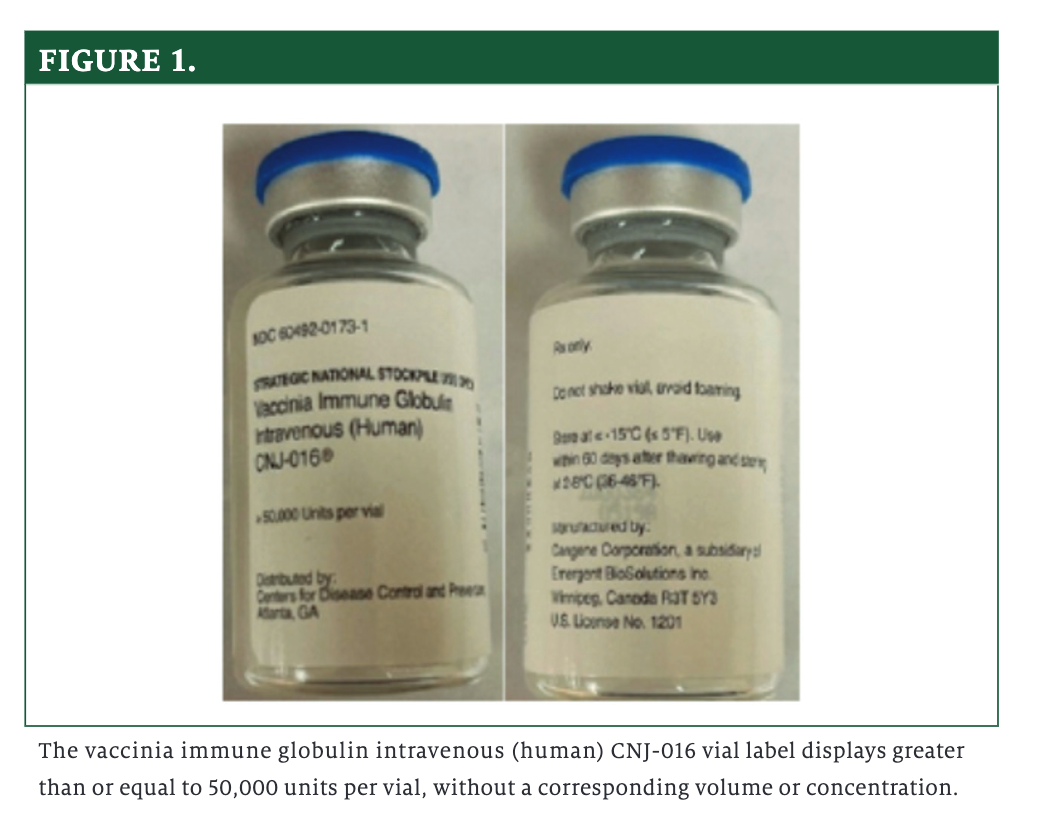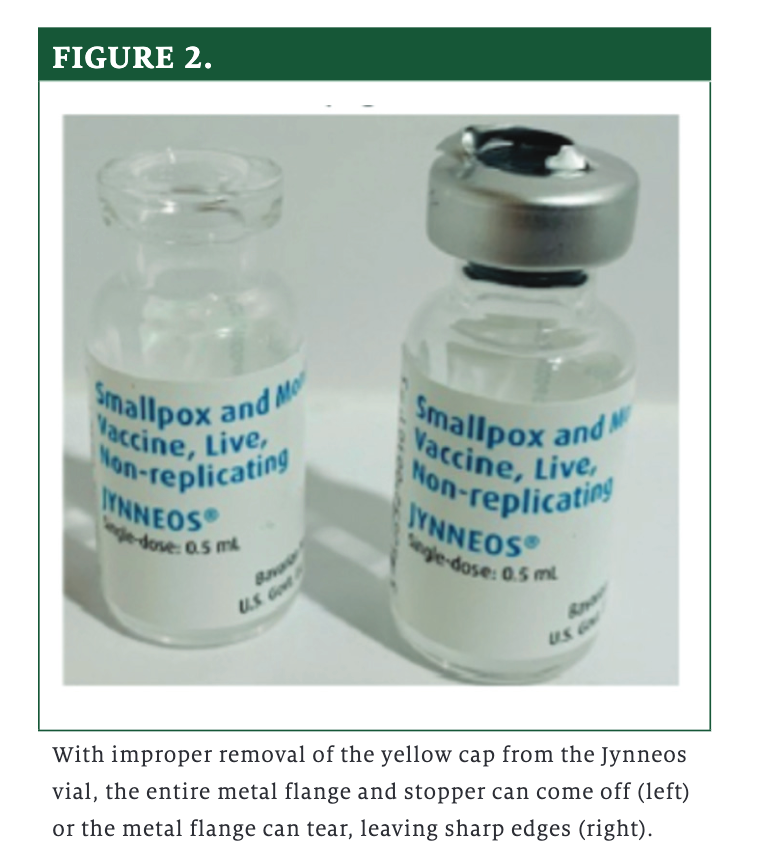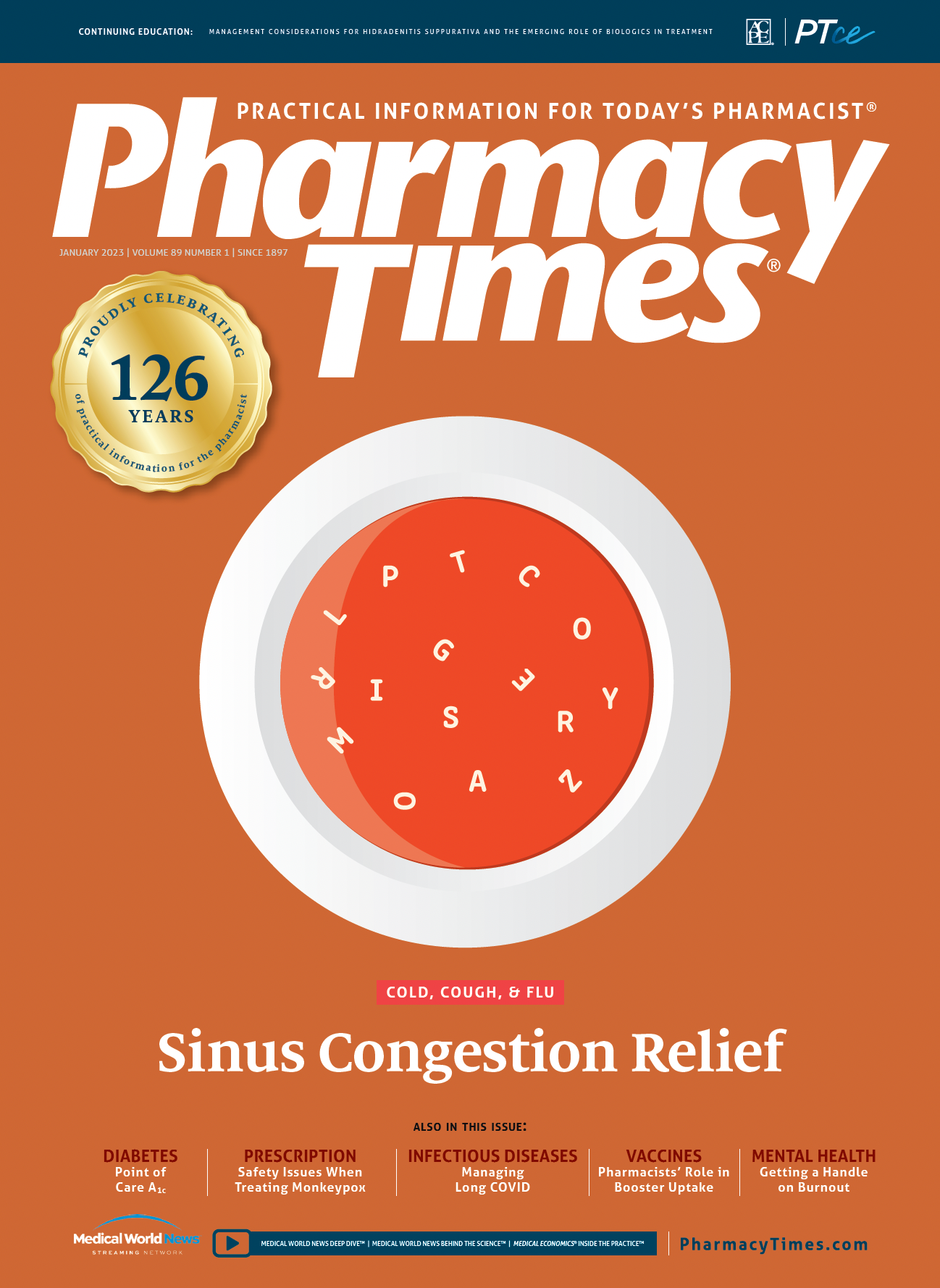Publication
Article
Pharmacy Times
Consider 2 Safety Issues When Treating, Vaccinating for Monkeypox
Author(s):
Protect patients by evaluating VIGIV concentration and avoiding tearing of metal flange on vaccine vial.
Pharmacists should consider 2 critical safety issues when treating or vaccinating patients for monkeypox.
First, it is vital to understand that the concentration of vaccinia immune globulin intravenous (human) (VIGIV) is not as it may seem. A prescriber ordered 6000 units/kg for a hospitalized 3.49-kg neonate with monkeypox like symptoms for a total dose of 20,940 units. A single-dose vial arrived from the national stockpile in an unlabeled carton without a package insert.
The immediate vial label displayed “greater than or equal to 50,000 units per vial” without listing a corresponding volume or concentration (Figure 1). When trying to determine how to prepare this product, a pharmacist found the package insert on DailyMed, which states that VIGIV is provided in a 20-mL single-dose vial containing antibodies to Vaccinia virus at greater than or equal to 50,000 units per vial. The package insert states to remove the entire contents of the vial to obtain the labeled dosage of VIGIV. Practitioners might assume the vial contains a total volume of 20 mL equaling 50,000 units, but 20 mL is the size of the glass vial. The actual volume in each vial is variable.

The pharmacist then consulted with the CDC and was instructed to withdraw the total volume in the vial and divide 50,000 units by the volume to determine the final concentration. The total volume was determined to be 11.5 mL and resulted in a concentration of 4348 units/mL. Therefore, the patient-specific dose (20,940 units) was calculated to be 4.82 mL. If the CDC specialist had not been available, the pharmacist might have incorrectly determined the concentration to be 50,000 units/20 mL (2500 units/mL), which would have resulted in a final dose of 36,436 units/8.38 mL, almost double the intended dose.
The Institute for Safe Medication Practices has confirmed this unusual situation with the CDC. To provide clarity, the CDC explained that the vials are filled from pooled plasma with a minimum of 50,000 units per vial, thus the concentration and volume vary per vial. When this medication is requested and approved to treat monkeypox, the CDC emails an investigational new drug (IND) protocol to the prescriber in advance, and this should be distributed to pharmacy staff members to refer to for dose preparation and titration instructions.
In addition to the container label issue, the administration section of the package insert states that VIGIV should be given intravenously at an infusion rate no greater than 2 mL/minute. For patients weighing less than 50 kg, it should be administered at a rate no greater than 0.04 mL/kg/minute, or 133.3 units per kg/minute. However, when consulting with the CDC, the pharmacist learned about the IND protocol, which indicated that for certain patients, VIGIV administration should be initiated at an infusion rate of 0.01 to 0.02 mL/kg/minute for the first 30 minutes and then increased by 0.01 to 0.02 mL/kg/minute from the initial infusion rate for the next 30 minutes. After that time, the remaining infusion may be administered at a rate of 2 mL/minute.
If a patient requires the use of VIGIV, obtain the IND protocol from the CDC or the prescriber and consider creating a worksheet to calculate the concentration of the vial in hand, including a label to use when drawing up the vial contents. Include complete titration instructions for the nurse so that VIGIV is administered at the correct rate.
A second critical safety issue to consider related to monkeypox is to avoid tearing the metal flange on the vaccine vial. The smallpox and monkeypox vaccine, live, nonreplicating (Imvamune in Canada, Imvanex in Europe, and Jynneos in the United States) come in vials that have a closure typically used for oral preparations that requires the metal flange be torn off and the stopper removed to pour out the liquid. However, the monkeypox vaccine is a parenteral injection and must be opened carefully. Unless an individual is aware of how to properly open these vials, the flange may be torn, leaving an exposed sharp edge, or the stopper may be removed, which can affect sterility (Figure 2).

We contacted Jynneos manufacturer Bavarian Nordic and learned that there are specific steps to follow to avoid damaging the flange. To use, flip off the yellow cap at the arrow imprinted on the cap with the thumb at a 90° angle, and leave the yellow cap on the metal flange. Alternatively, flip the yellow cap all the way off, but ensure the metal flange stays on the stopper/vial.
About the Author
Michael J. Gaunt, PharmD, is senior director for error reporting programs and editor at the Institute for Safe Medication Practices (ISMP) in Horsham, Pennsylvania. He also serves as the editor of the monthly ISMP Medication Safety Alert! Community/AmbulatoryCare newsletter.






